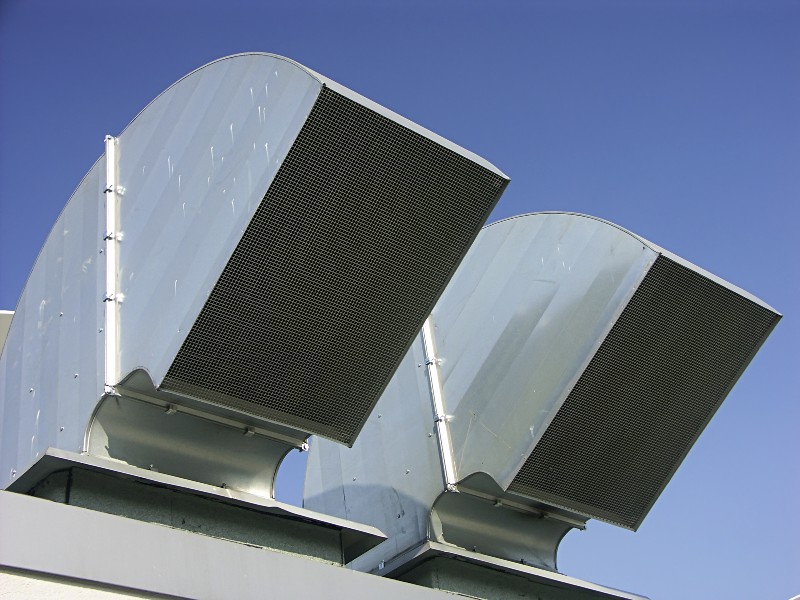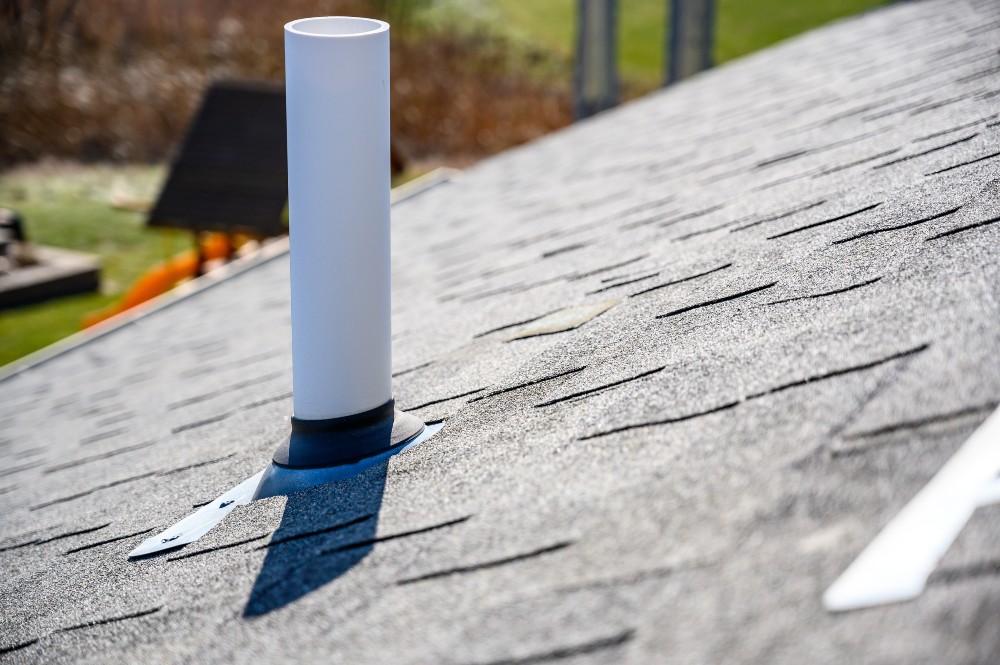Part of a home’s roofing system, roof vents promote good airflow within attics. This prevents mold and ice dams while reducing utility costs. When it comes to choosing a roof vent for your home, it helps to know the available options. Here are the most common types of exhaust and intake roof vents for modern homes.
Exhaust Vents
Exhaust vents are designed to force humid and hot air out of the attic to promote good circulation in the home. The most popular types of exhaust vents include:
1. Wind turbines
One of the oldest and most identifiable exhaust vents, wind turbines are dependent on regular air movement instead of electricity. As it spins, the stale or hot air seeps out, cooling the attic and improving ventilation.
Still one of the most effective exhaust vent options for windy locations, turbines need at least 5MPH or wind speed to operate. Aside from this drawback, it is inexpensive and durable compared to the other kinds of exhaust vents.
2. Power vents
Also called electric-powered vents, these products come in two varieties: solar-powered roof vents and hardwired power roof vents. Typically mounted on the roof or within the gable, power vents are smaller and easier to blend with a house’s aesthetics. Power vents utilize a fan, pushing humid and hot air out. While they can be pricey, their efficiency and noiseless operation make them a popular choice.
3. Hardwired roof vents
The most common power roof vents, these are directly connected to the house’s wiring. Typically paired with intake vents, hardwired vents automatically force air out as needed. On the downside, they can make AC systems less efficient and negatively impact monthly electric bills.
4. Solar-powered vents
Powered by the sun, these venting options come in many styles and can be placed by the gable or mounted onto the roof. If you live in a sunny climate, solar-powered vents are nice options, but they aren’t generally as efficient as hardwired vents when it comes to forcing air out.
5. Off-ridge vents
A lesser-known vent type, these options require a cutout in the roof, usually near the edge. While they can help flush moist, hot air from the attic, off-ridge vents are low in coverage. For an adequate exhaust system, you’ll generally need several installed throughout your roof.
6. Box vents
Ideal for open attic plans, box vents are not powered by electricity. The best combo for soffit intake vents, these options do not cover a lot of space, so you need to install several to ventilate larger homes.
7. Ridge vents
The most recent exhaust vent innovation, these products are designed to fit on the peak of a sloped roof. This makes them a discreet option for providing even, thorough airflow. While they can be pricey, ridge vents tend to be more cost-efficient in the long run. That said, they aren’t the best option for homes with soffit intake vents.
8. Cupola roof vents
Even older than wind turbines, these venting options are often seen on Mediterranean or Spanish home designs. Installed in the roof ridge, cupolas are large and relatively expensive. Due to their shed-like designs, these vents do a good job of allowing air to continually pass through them. They also add some aesthetic flair that appeals to many homeowners.
9. Hip vents
Resembling a box vent, these options have a pyramid shape. Usually attached to hip roofs, they are placed in the hip’s seams and covered with shingles. Low profile and highly effective, hip vents tend to blend well with a home’s design. To be cost-effective, however, they usually need to be combined with soffit vents.
Intake Vents

Intake vents are designed to pull in hot air and cycle it to exhaust vents to create cooler airflow within a home. The most popular types of intake vents include:
1. Gable vents
With a triangular shape, this kind of vent is installed at the peak of the gables. While efficient, gable intake vents need screens to keep pests out. They also don’t offer optimal coverage unless your house has multiple gables.
2. Soffit intake vents
These are typically installed under a peak or beneath an eave. They are made of a flexible, mesh-like material that allows hot and humid air to pass through exhaust vents. It is the best intake vent for ridge vents, box vents, hardwired power roof vents and hip vents.
3. Drip-edge vents
Mounted on the roof’s drip-edge, these netted vents work well on homes with limited soffit space. A bit more difficult to install, they work better in conjunction with exhaust vents.
4. Over-fascia vents
If there are no eaves or edges to attach a vent to, these intake ventas are the optimal choice. The best combination for hip roofs, over-fascia vents are more efficient at cooling a roof with a wider total area.
To ensure that you have the proper ventilation system for your roof, it’s important to work with reputable roofing experts. For decades, the professionals at A to Z have provided expert residential roofing repair and restoration for homeowners and businesses throughout Colorado. A locally owned company, we’ve operated continuously throughout the Denver metro area and Front Range for nearly a quarter of a century. During this time, we’ve provided comprehensive, reliable service using only high-quality products. Contact our attentive professionals to learn how we can repair, restore or replace your aging or damaged roof.

